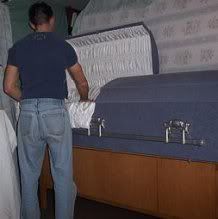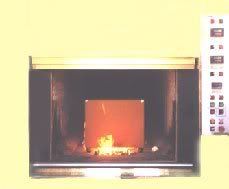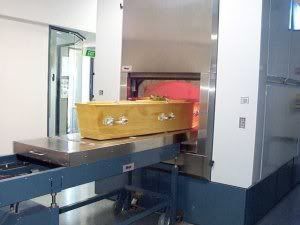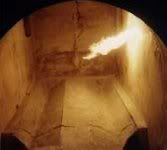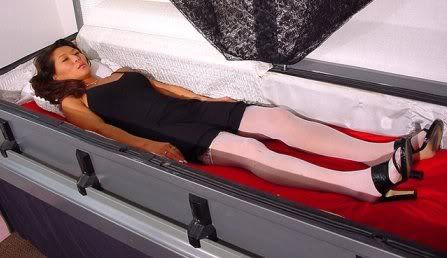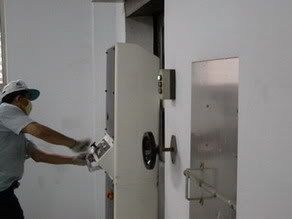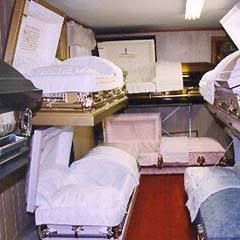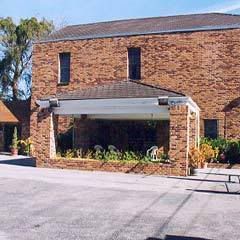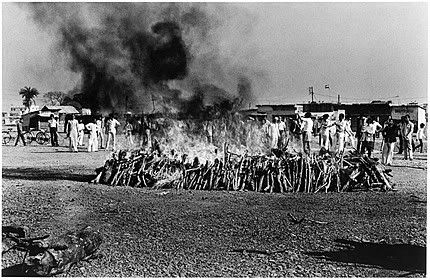The Church No Longer Forbids the Practice, but Doesn't Allow The Scattering of Cremated Remains
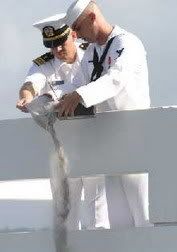
To judge by the box-office receipts, millions of Americans saw the final scene in the movie "The Bridges of Madison County." In it a son and daughter honor their mother's last request by scattering her ashes from a scenic Iowa bridge.
It's high drama, a powerful moment. Whatever else it might be, however, it would clearly not be a proper burial if the woman were Catholic.
But the mere fact the woman was cremated is not the issue. Today many Catholics, in speaking with their parish priest about funeral arrangements for themselves or for a loved one, are surprised to learn the Church no longer forbids cremation. What those cinematic heirs did wrong was to ignore the Church's stipulation that cremated remains (called "cremains") must receive a proper burial in consecrated ground.
"You can't store Grandma on the mantel or scatter your father's ashes across the 13th green of his favorite golf course," advises Father Peter Polando, canon lawyer and pastor of St. Matthias Parish in Youngstown, Ohio. "The Church has strong feelings about the fact that this body has been a temple of the Holy Spirit and requires a proper burial as a result."
By definitions supplied from funeral-industry literature, cremation is the process of reducing the body to bone fragments through the application of intense heat. The bone fragments are then pulverized, and placed within a temporary container before being returned to the family.
Catholic burial practice calls for the cremains to be buried in an urn within a consecrated grave or placed inside a mausoleum. Keeping ashes at home or scattering them on land or sea, even where legal, is inappropriate to the Church's deep reverence for the body as a place where the soul has resided, As "Our Sunday Visitor's Catholic Encyclopedia" notes:
"Cremation was the normal custom in the ancient civilized world, except in Egypt, Judea and China. It was repugnant to early Christians because of the belief in the resurrection of the body. By the fifth century, cremation had been largely abandoned in the Roman Empire because of Christian influence."
These days, cremation has become more common in the United States among persons of various denominations. The Cremation Association of North America (CANA) estimates that out of roughly 2.6 million deaths each year, there are some 471,000 cremations, or about 20 percent.
By the year 2010, the association predicts, cremations will account for almost 33 percent of funeral planning. Currently, California far outstrips the nation with 93,221 cremations reported in 1994. CANA says there 1,100 crematories in the United States.
The number of cremations is increasing for three main reasons. First, there is a growing shortage of burial spaces in some sections of the nation. Second, in a mobile society where many people move often, it's much simpler to transport ashes than a casket. Many elderly who live in the northern states, for example, winter in warmer climates. It's not unusual for them to leave instructions that, should they die there, their bodies are to be cremated and the remains flown home to be interred in the family burial plot. And a third reason is financial: a cremation typically costs significantly less than a full-scale burial in a casket.
Just when and why did the Church change its teaching on this option?In his book "Questions and Answers," syndicated columnist Father John Dietzen explains "the first general legislation banning the burning of bodies as a funeral rite burning of bodies as a funeral rite came from the Vatican's Holy Office in May 1886, noting the anti-religious and Masonic motivation behind the movement. The 1918 Code of Canon Law continued that ban because cremation was still considered a flagrant rejection of the Christian belief in immortality and the resurrection."
But now the new Catechism of the Catholic Church, which devotes hundreds of words to some subjects, matter-of-factly devotes only 20 words to the topic: "The Church permits cremation, provided that it does not demonstrate a denial of faith in the resurrection of the body" (no. 2301).
The current Code of Canon Law (revised in 1983) devotes a mere 30 words that elaborate on the same theme: "The Church earnestly recommends the pious custom of burial be retained; but it does not forbid cremation, unless this is chosen for reasons which are contrary to Christian teaching" (no. 1176).
So what happened between the end of World War I and the writing of the revised code? In 1963, the Church began to relax its attitude toward cremation for reasons of national custom, lack of burial space, disease control and other considerations. Now the revised code's canon incorporates the 1963 decree, but omits any mention of requiring a good reason for cremation.
Father Polando noted that the Canon Law Society of America's "Commentary on the Code of Canon Law" is more specific: "In the old code, the former law was quite forceful and restrictive in its opposition to cremation. Actually, the Church has never been against cremation as such, but discouraged it because of the reasons people used to justify it.
"The Church reacts to problems that come to its doorstep," he continued. "The Church adopted the stance it did because people were using cremation to justify denying the resurrection of the body."
But now the Church believes those who request cremation aren't doing so out of any desire to deny bodily resurrection or defame Church teaching. Cremation and a Catholic funeral liturgy would, of course, be denied if that were the case.
By Lou Jacquet
